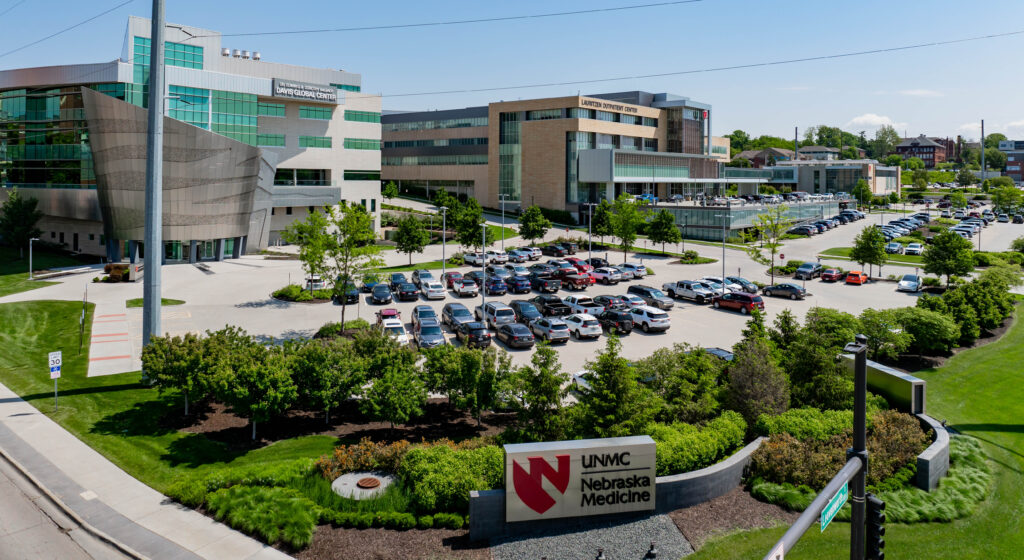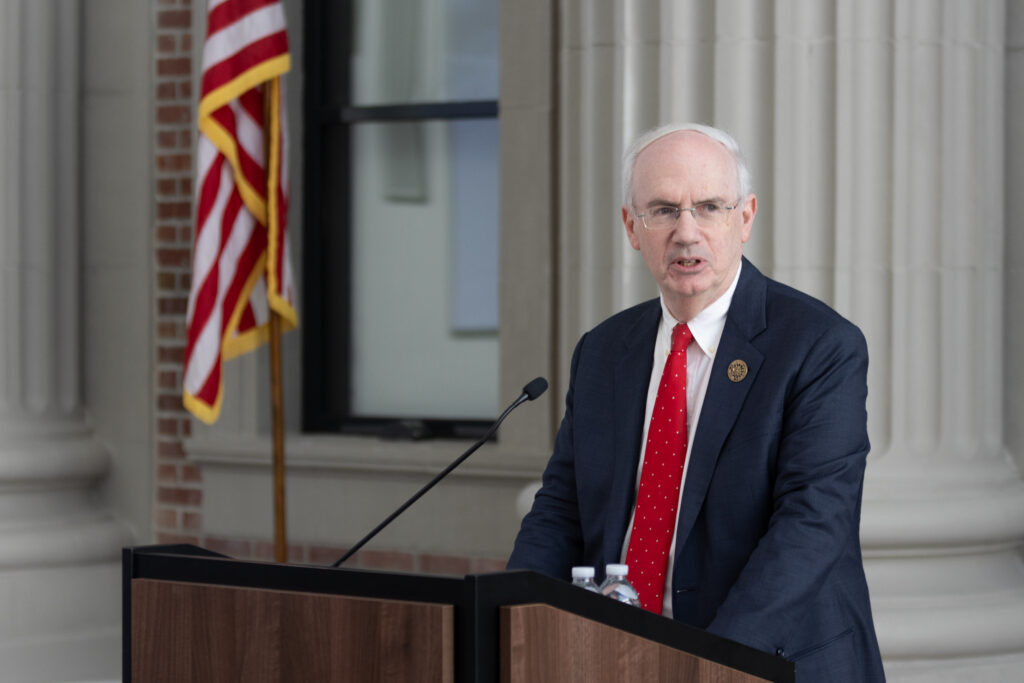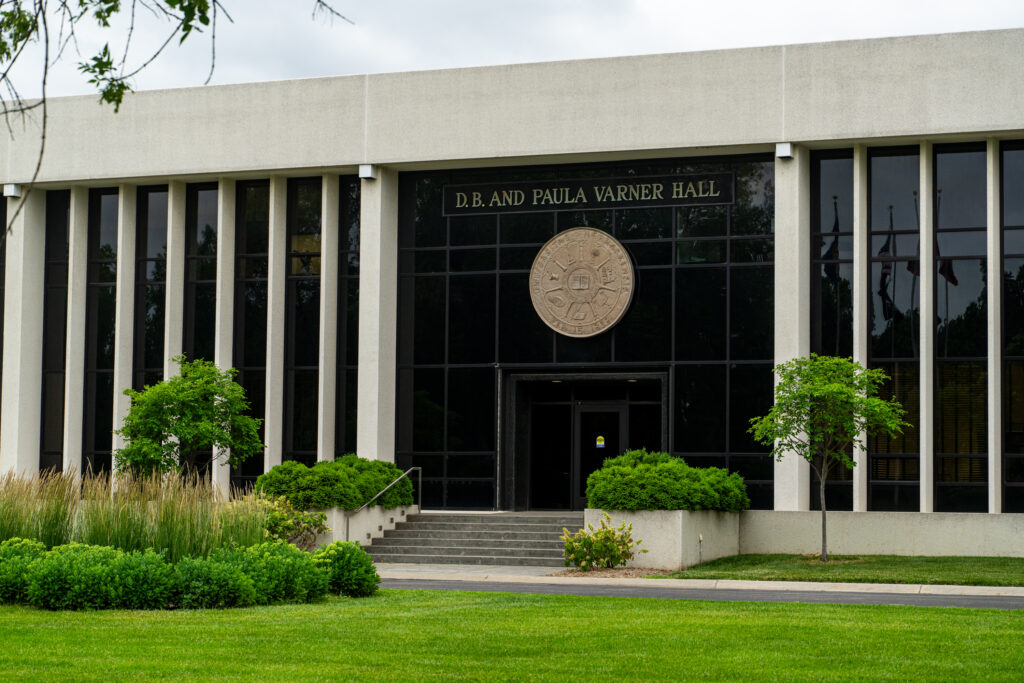The University of Nebraska would do less cutting-edge medical research, lay off employees and lose top scientists if deep federal cuts backed by President Donald Trump’s administration take effect, say university leaders.
In interviews, NU President Dr. Jeffrey Gold and leaders at the University of Nebraska Medical Center portrayed the proposed cuts as a dark cloud hanging over local researchers and noted they would prove even more painful if coupled with potential state budget cuts.
“As sad as it is to say, if this is sustained over a long period of time, as we reduce the amount of research, we’ll clearly have to reduce personnel,” Gold told the Flatwater Free Press.
The National Institutes of Health unveiled a plan Friday to cap the amount it pays to research institutions for “indirect costs,” which include building upkeep, utilities, administrative staff and other routine expenses.
The cuts, which have already been temporarily blocked by a federal judge, would require the University of Nebraska system to absorb more than $27 million to sustain its current research and facilities, Gold said.
The lion’s share of these federal funding cuts would come at the Med Center, but they would also impact research at the University of Nebraska-Lincoln.

Creighton University would stand to lose about $1.5 million a year in NIH grants, said Provost Mardell Wilson. Boys Town and several private researcher groups in Omaha would see their funding slashed under the proposed plan too.
Backers of the proposed NIH cuts say deep-pocketed universities have been taking advantage of the federal government. Billionaire Elon Musk, who leads an unofficial cost-cutting group known as the Department of Government Efficiency, said in a tweet that universities with massive endowments were ripping off taxpayers to cover overhead.
Trump echoed the sentiment, alleging that Harvard University isn’t using its $50 billion endowment to help students.
“You have to look at the university. Some are legit. You could also say, ‘Why are we giving money to Harvard when it’s got a $50 billion endowment?’” Trump told reporters. “We want to take care of research, we want to do a lot of things.”
NU administrators say the university’s cash reserves are low, noting that reductions in key federal grants could result in painful layoffs and hamper research into treatments and diagnostic tests for cancer, heart disease and other deadly conditions.
At Creighton, the losses would put a kink in the scientist pipeline where undergraduates often get their first laboratory experience, Wilson said.
The chaos, other funding freezes and now these proposed cuts are together scaring Nebraska researchers, especially those early in their careers, said Ken Bayles, UNMC’s vice chancellor for research. He’s worried some will soon start looking for other jobs.
“All this infrastructure we’ve built, all the personnel, the expertise that we have is extremely hard to replace, but if they see a sinking ship, I’m afraid they’re gonna jump overboard and move on,” Bayles said.
****
When researchers receive a grant from the NIH, most of the money directly funds the research they’re doing.
But a slice of each grant is set aside for indirect costs — often referred to as facilities and administration costs. At UNMC, for every $100 in direct funding, the NIH provides about $54 to cover indirect costs.
Rebekah Gundry said she and her heart disease research team interact constantly with the things covered by indirect cost payments. They keep the lights on, she said.
Indirect costs pay for the water flowing from the faucet, the electricity powering computers and, Gundry said, the employees who clean UNMC labs and keep them safe.
The payments also help cover the cost of maintaining critical shared resources, including a research library and labs full of specialized equipment, Gold said. UNMC has more than 30 “core labs” where researchers can use machines like genetic sequencers and electron microscopes.
“Facilities and administration fees are not like an extra slush fund,” Gundry said. “They’re actually designed to pay for resources that are pooled across the institution that are necessary to support research.”

Historically, the NIH determines indirect cost rates at each institution based on its size, expenses and research output, said Gold, who has previously conducted NIH-funded research on cardiac surgery. Institutions are federally audited to ensure the funds are used properly, he said.
The rates vary by project, but NU’s campuses generally receive payments equally to around 50% of the direct costs, Gold said. Creighton gets about 47%, Wilson said.
If the proposed cuts take effect, that would decrease to 15% across the board.
“I don’t even think that I can verbalize in a coherent manner how devastating these cuts will be,” Gundry said.
In its Friday memo, the NIH said the cutback would bring the agency’s rate more in line with what private organizations, like the Rockefeller Foundation, pay researchers for indirect costs.
Gold noted that funding from philanthropists and corporations can be used in a less restrictive way than public money, so in those cases the lines between direct and indirect costs are often blurred.
Nebraska’s robust philanthropic sector could help the university system buy some time if the NIH cuts do occur, but Gold said he doesn’t see that as a long-term solution since raising money to pay for routine maintenance is usually difficult.
When UNMC hires a new faculty member, it often makes multi-year commitments to them based on funding projections. Those calculations would suddenly be wrong if the usually reliable NIH grants shrink, said Dr. H. Dele Davies, UNMC interim chancellor.
The federal cuts would reduce the ability of researchers at UNMC and across the country to make breakthroughs on life-saving cures and treatments, Davies said.
“The money has to come from somewhere or we can’t do the research. That’s the bottom line,” Davies said.
Bayles, the vice chancellor, leads a nation-leading lab dedicated to study staph infections that is already “running on fumes” due to NIH funding hangups.
Days after Trump took office, his administration directed the NIH to freeze grant review meetings, travel to conferences and communications with researchers.
Bayles’ NIH grant recently expired, and the agency canceled a scheduled meeting about renewing its support for his work. His lab, now operating with only essential personnel, aims to develop new therapeutics to overcome the increasing antibiotic resistance of staph infections.
“All I can say is that I’m worried about the sustainability of my research,” Bayles said.

Carving away at NIH funding would undermine a decades-old partnership between the agency and research institutions that has made the U.S. a global leader in medical discovery, said Peter Steyger, a Creighton professor who studies hearing loss.
And just like the ability to hear, research infrastructure is very hard to recover once it’s gone, Steyger said.
“Once we lose it, it’s lost for a very long time – in the case of our lifetimes, permanently,” he said.
NU leaders fear the proposed NIH cuts could be just the beginning of a trying year for research funding.
There’s widespread worry that the National Science Foundation, another federal agency that funds research, could also see major downsizing.
At the state level, Gov. Jim Pillen’s proposed budget would remove NU’s $11 million share of tobacco settlement money that currently funds research.
“This is a two-edged sword strike against the future of research in the university,” Gold said.
A spokeswoman for Pillen did not immediately respond for comment.
If research dollars grow scarcer, Gundry said it could force a scaling back her NIH-funded lab, which builds technology to more effectively treat heart disease, the leading killer of Nebraskans.
Either that, or she could move to another country with a more supportive ecosystem, she said.
“I’ve never actually considered (leaving the U.S.) as a real possibility until this past month,” Gundry said.
The sudden radio silence from the NIH — and now the proposed funding cuts — has filled many in medical research with a “sense of doom,” Gundry said.
“It feels like science died — the killing of science.”
Editor’s note: This story has been updated to include additional information from Creighton University, the latest court developments and remarks by President Donald Trump.



5 Comments
U of Nebraska has $2.2 billion in endowments so I think it can cover $27 million in “additional” indirect costs.
Perhaps an audit of its existing indirect cost rate could provide insight.
Perhaps a follow up story could be where will all the people who are laid off because of the cuts will go for employment? Obviously, one researcher is considering a move to another country. But what about those who cannot move? Is the unemployment rate going to spike? Where are the jobs for these highly-skilled researchers?
If upheld, the impact of this cap will be disastrous. Research cannot be conducted without a supportive infrastructure, and researchers will go to other countries that provide support, such as China. This goes directly against “America First.”
Perhaps a follow up story could be where will all the people who are laid off because of the cuts will go for employment
I believe the answer by the previous administration is applicable here.
They can make chips. Or work in the non existent renewal energy field that has no jobs within 500 miles of where the Keystone folks live.
There’s a lot of, we can’t deal with this today, as opposed to, Americans can do anything they put their mind too, on here.
I believe that my generation, the Boomers, started the slide to the bottom of this country. Some posts on here support such an observation. Catch up and help us move on, but at least get lout of the way.
Lyrics by Three Dog Night:
(Here they come, yeah)
Well, some are walkin’, some are ridin’
Here they come, yeah
And some are flyin’, some just glidin’
Released after years of being kept in hidin’
They’re climbin’ up the ladder rung by rung
You might want to go read the rest of the lyrics.
I believe the question of how big an endowment the university has in the bank was left unanswered. If they have enough to cover this ‘loss’; then open up the bank and start paying for these necessary ‘expenses’.
I guess I tire of institutions that continue to raise tuition and plea for more federal and state monies; yet have fat savings accounts.
It’s kind of like Mr. Buffet stating he doesn’t have enough money.